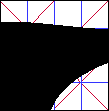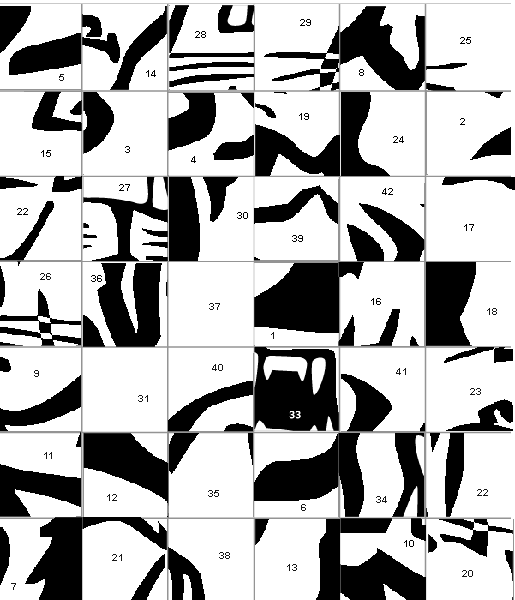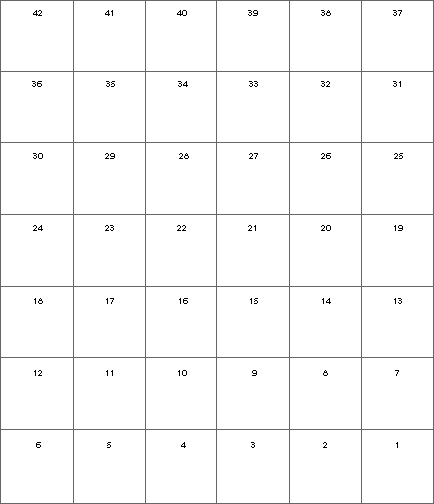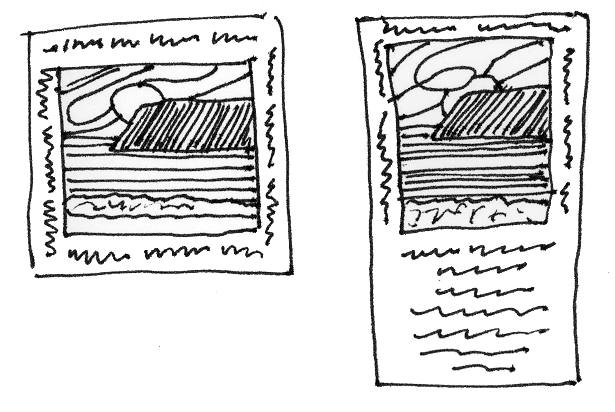Site
Map | Quotes
| WordList
| Glossary
| Graphic
Organizers | Rules
of Thumb | On-Line
Resources | WriteDesign
| Co-Teachers - Doug
and Melissa
| Gallery
E-Mail Doug at mrdoug@aznet.net
or Melissa at mjmckinstry@earthlink.net
Assignment
Rationale
To provide students a vehicle to broaden their comfort,
understanding, and use of the creative
process and to learn how to translate a
two-dimensional drawing into a three-dimensional piece, ceramic
tile.
Students will select a "special place", a place in
nature where they have visited and feel a close attachment, e.g., a
place where they go to think, relax, escape, gain perspective, get
invigorated, to savor the wonders of life, etc. They will work
through the creative process to produce a tile that represents their
"special place". The tile will become a part of an multimedia Earth
Day installation. The goal of the installation embraces the
specialness of our environment and the importance of protecting that
which we love.
Kickoff Pieces
- Brainstorm
- Visualize experiences that focus on the four elements of nature:
Air, earth, fire, and water.
- Walk about drawing - Go out on campus, find, and draw
the four elements of nature. Revisit the concept of "Look, hold,
and draw". Find an object(s) or composition (combination of
elements), look and focus on the basic shapes, do a one minute
quick sketch to get familiar with the shapes of the object(s),
then do a five- to ten-minute detailed sketch. Repeat this with
four different objects or compositions.
- Still life drawing - Draw three to four sketches of a
still life set up in the classroom using the same "Look, hold, and
draw" - one minute - five- to ten-minute sketch technique
above.
- Group discussion about "special places" - Work in a
small group; discuss individual special places, their
descriptions, and the attached emotions; then share with the whole
group.
- Select five special places - Select five places that
hold significance for you. Starting with the place of most
interest, find images, personal photographs, Internet pictures, or
pictures from other sources. If images are not available eliminate
that place and move onto one of the other selections. The goal,
select one special place that has significance and several images
from which you can create a composite drawing.
- Create a composite drawing - Make a composite drawing
from available images (take the best parts of each image to create
an idealized, artistic view of your special place or the view from
your special place).

The image above represents a composite drawing of Point Loma which
is what I see from my special place, the beach at Coronado where I
have walked or jogged over 12,000 miles during my life time.
Top
- Write about what you see, describe textures, semlls,
colors, etc. and/or write about how it makes you feel. You may use
quotes if they embrace your sentiments. You may also write in a
language other than English.
- Shape puzzle - Draw the shapes
found in each of the rectangles into the numbered blank grid. This
exercise reinforces the concept of "Look, hold, and draw".
- Revise and edit your composite drawing - Look at your
drawing and make sure that every line, angle, shape looks the way
you want it to look. Ask others for feedback.
- Revise and edit your text - Read your text outloud and
make sure that what you wrote makes sense, that you have spelled
everything correctly, and that you have conveyed your feelings
about your special place in a way that takes you and the reader
there. Ask others for feedback.
- Create thumbnails -
Produce at least three thumbnails. This process will save you time
and improve your final product, so work quickly, but
thoughtfully.
- Experiment with clay tools to determine which techniques
create the most appropriate representation and the associated
feelings of your special place. - Work in class and then take
home a piece of clay to continue your experimentation.
Sculpture Processes
Sculpture is the creation of three-dimensional forms. A form
is a three-dimensional object defined by contour, height, depth,
and width. Sculpture is created by three basic processes: carving,
modeling, or assembly.
Top
Essential Ingredients and Rubric
Phase 1 - Select images that represent your special
place.
After you have selected one special place from a list of five, find
and bring in at least three pictures, personal or from the Internet,
that show your special place or the view from your special place. No
human-made object(s), only nature, e.g., the beach at Coronado where
I've walked thousands of miles over my life represents my special
place.
If you can't find images of your first choice, eliminate that
place and pick another. Part of the problem-solving process entails
knowing when to continue or when to move on to another option.
Subtotal (10 points) Please attach all images for phase
1.
Phase 2 - Describe the place or the emotions attached to the
place in single words, phrases, prose, poetry, etc.
Write about what you see, describe textures, smells, colors, etc.
and/or write about how it makes you feel. You may use quotes if they
embrace your sentiments. You may also write in a language other than
English.(10 points)
Word process your final version, make sure your name and class
period are typed at the top, and that you have spell checked and
edited your work. Keep in mind, the computer does not catch all
mistakes, you need to read your work carefully. Get help when
possible. (5 points)
Subtotal (15 points) Please attach all drafts for phase
2.
Phase 3 - Draw a detailed "realistic" composite picture of your
special place
Take elements from multiple pictures to draw your own version, a
composite picture. As the artist you select the elements to include
or omit and how to represent them. You may choose to create a picture
that shows your special place or the view from your special
place.
Phase 4 - Create three thumbnails
that include:
- a composite drawing that represents the special place, as well
as graphic elements as appropriate; and
- text of what you see, how you feel -- a poem, adjectives,
quote(s) -- something that expresses and/or describes what this
place means to you.
The thumbnails should use a square format and reflect how you
would translate your drawing to clay. If you need additional space to
accommodate a poem or more text, make sure that the shape and
proportions of your thumbnails reflect the final tile shape and
size.
Subtotal (10 points)
Phase 5 - On a piece of clay approximately 6" by 6" combine the
image and words to represent your special place. You may require a
larger tile or a second tile if you choose to include more
text.
The final piece will be assessed on the following elements:
- a composite image of your special place in nature without any
human-made objects (10 points);
- text that describes textures, smells, colors, etc. and/or how
it makes you feel (10 points);
- at least three surface levels of clay:
- 1. cut aways, etched, imprinted, etc.;
- 2. surface level; and
- 3. additional raised, constructed levels.
You may use more than three levels, but you must have at least
three (15 points);
- reflects the use of the creative process, the final piece
clearly evolved from the previous four phases
You must include all drafts,
sketches, and notes from each phase with your final project.
(10 points); and
- reflects thought, effort, and care. (10 points).
Subtotal (55 points)
Total (100 points for all five phases)
Remember, the way you present your work
becomes evidence of your abilities. A neat, organized, thoughtful,
and creative presentation "package" shows the reader/viewer that you
care and gives them reason to care.
Top
Shape
puzzle
The puzzle below reinforces the concept of "Look,
hold, and draw".
- Look at the shapes, white and black, within each numbered
rectangle to decide which is more pronounced and easier to
identify.
- Find reference points within the rectangle that help you draw
the shapes accurately.
- Where does the shape start?
Try to determine if the shape starts a quarter of the way down,
half way across, etc.

- Where does it end?
- Does the shape have a straight or arched line?
- Does the line go up or down?
- What is the angle of the line?
- Where is the line/shape relative to other lines or shapes
within the rectangle?
- Hold one shape, line at a time in your mind until you can draw
it from memory.
This step is the most important. Too often we get impatient and
draw before we really know what we want to draw. Make sure you can
see the shape, one line at a time, in your mind, then and only
then draw the line.
- Draw the line you see in your mind.
Use a very light thin line when you first draw the shapes. If you
make a mistake you can easily correct it if you drew with a light
line.
- Check to make sure what you drew matches what you see.
- Make any corrections accordingly.
- Continue with the next shape, line.
Have fun and you will find out that you really can draw.
Top

Top

Top
Creating
thumbnails
Thumbnails represent scaled down versions of the final product.
For this project where the final product size is 6" x 6", thumbnails
might be approximately 2" x 2", large enough to show some detail, but
small enough to work quickly.
Thumbnails enable you to make decisions about how you wish to
present your content without investing a lot of time.

Make sure your thumbnails have the same proportions as the final
product.
Include all of the elements - images, text, and other graphic
devices that will make up the final product.
Keep in mind that even though thumbnails help you make decisions,
changing scale to full size often changes the final
layout.
Please don't get lazy with your exploration. Time spent
in the creative process leads to much more satisfactory, sometimes
even brilliant, results.
Remember to enjoy the journey.
Site
Map | Quotes
| WordList
| Glossary
| Graphic
Organizers | Rules
of Thumb | On-Line
Resources | WriteDesign
| Co-Teachers - Doug
and Melissa
| Gallery
| Top
E-Mail Doug at mrdoug@aznet.net
or Melissa at mjmckinstry@earthlink.net
|

|
Melissa and I would like to
thank znet
for
making a commitment to
education and WriteDesign.
|





